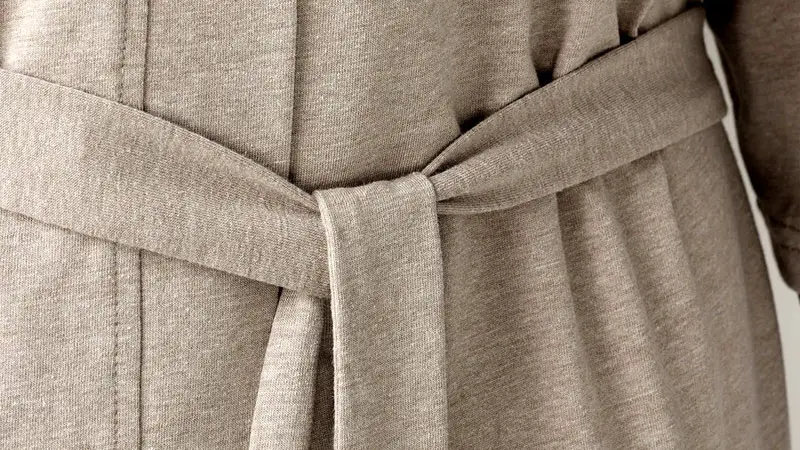When we think of various types of clothing today, the words we use have very different meanings than they originally carried. For example, “dress” was originally a word for (very) long tunics tied at the waist by a belt that were unisex.
“Skirt” originally meant “shirt” and seems to have become associated with kilts (again, originally unisex). But what about the robe?
The word robe originally referred to both clothing and robbery, since clothes were some of the most commonly stolen items. They then came to mean “a long, loose outer garment”.
Over the years, there have been a wide range of different robe types that have evolved, most notably the bathrobe. You might not have to worry as much about someone robbing you for your robe these days, but they’re still a more popular type of garment than you might think.
Here are 13 types of robes to prove it.
See Also: Different Types of Ponchos
Types of Robes
1. Academic Dress (AKA Scholar’s Robe)

Commonly known as an academic dress or scholar’s robe, these robes have evolved a lot over the centuries and have gone from functional to purely ceremonial in nature. Today, they’re most often seen along with an academic stole at graduation ceremonies.
The dress or robe most often features a zippered front to make it easier to get in and out of and is generally monotone while the stole features designs or colors reflecting the institution bestowing the honor.
However, these Catholic-inspired vestments were something quite different just a few centuries ago. Instead of being a silken one-and-done gown, they were referred to as scholarly robes and were a sign of academic excellence. These robes looked a lot more like what you’d expect – tied in the front, thick, and fur-lined.
They were warm and functional, being worn on a regular basis. A great example of the scholar’s robe can be seen in use on pretty much every image of the Dutch philosopher Desiderius Erasmus Roterodamus.
2. Bathrobe
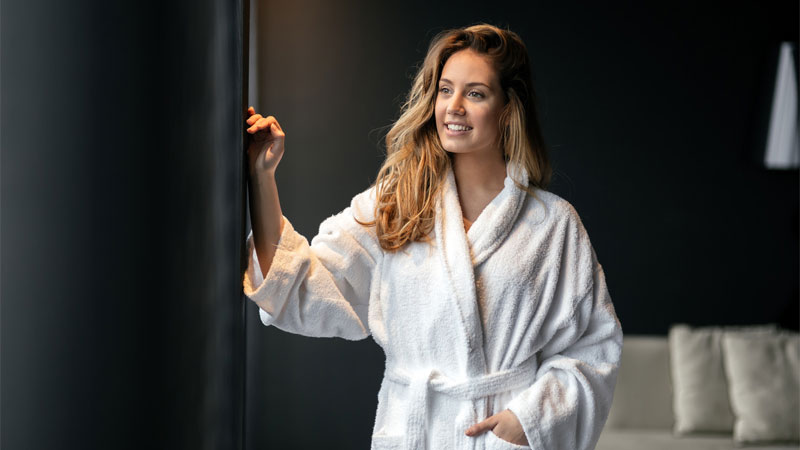
Ahh, the bathrobe – the single most common type of robe in use today. Bathrobes are a cross between a dressing gown and towel. Terry cloth is a popular material because of its absorbency and cozy, cottony goodness, and is sometimes also used as a lining for velour bathrobes.
Waffle fabric is also a popular choice in modern bathrobes. Kids’ bathrobes tend to be made of plush micro-fleece. The original purpose of the bathrobe was so you could wrap yourself in your towel without having to dry yourself off immediately. However, it’s a common practice for people to dry off first, making this function moot.
While most bathrobes are tied using a belt of the same material, they can have very different cuts and necklines. For example, hooded bathrobes are especially popular among children and feature a voluminous hood that helps cover wet hair (instead of needing to wrap it in a separate towel).
Others feature a shawl collar, which is a large collar that can be rolled up or down as needed (picture how the collar on a trench coat or raincoat is often used).
Related: 21 Types of Bras
3. Banyan
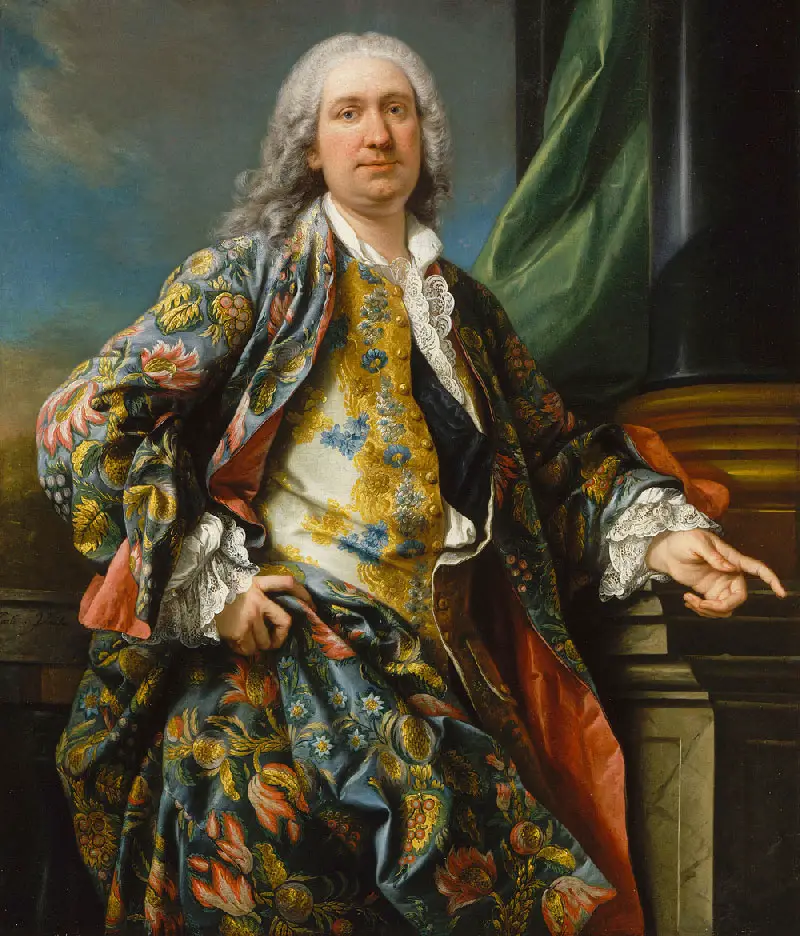
Despite being influenced by Japanese clothing imported during the 1600s and 1700s, the banyan more closely resembled a modern dressing gown and may be a direct ancestor.
Known as a morning gown, banyans were worn both informally and when posing for portraits (because the comfort provided made long sitting sessions more bearable).
Today, the European banyan is no longer in use, although a different garment bearing the same name exists on the Indian Subcontinent.
See Also: 19 Different Types of Shawls
4. Buffalo Robe
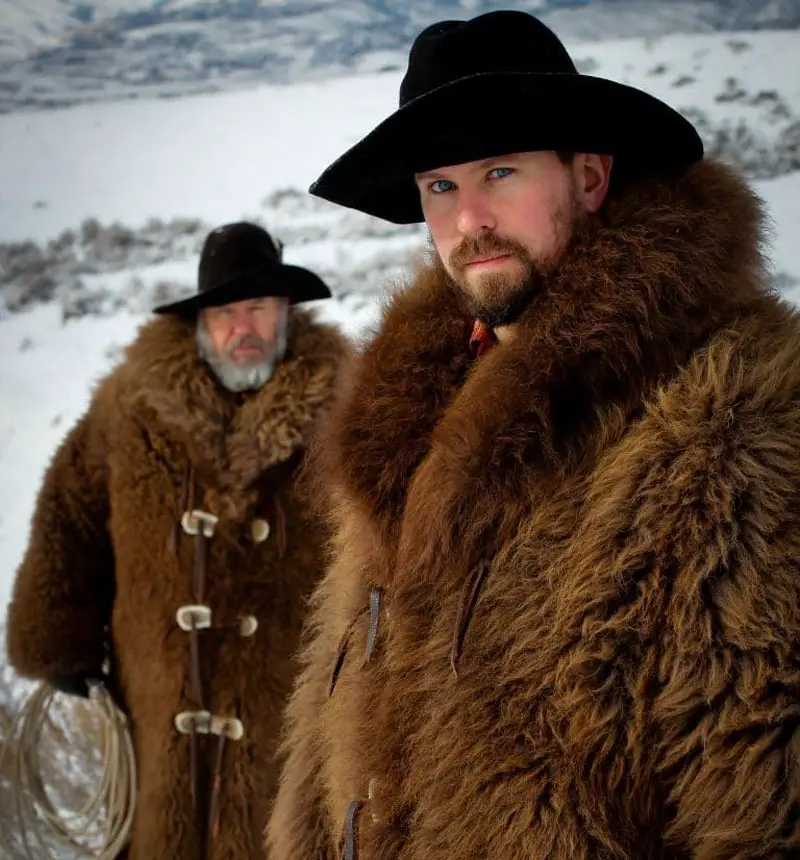
This type of robe was used for far more than clothing, although that’s its most famous function. Native Americans cure the hides of buffalo caught between November and March when the fur is at its thickest. This fur is left on to provide additional insulation.
Much like the Scottish tartan, a buffalo robe was worn as a garment but could also double as a blanket. Buffalo robes played a key role in the fur trade, whereas hies from the warmer months were less valuable and used as a source of leather.
5. Dressing Gown & Housecoat
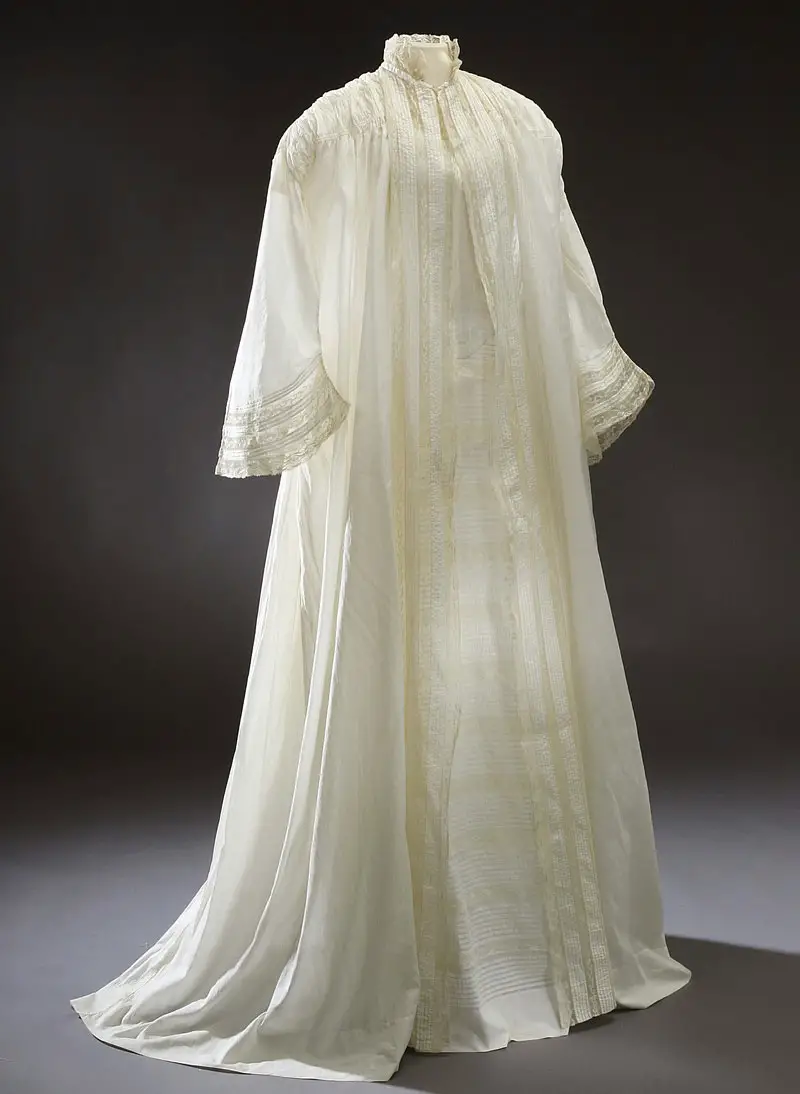
These two types of garment are virtually identical, although the housecoat is often of a thicker material such as cotton or wool and are frequently considered to be a type of thin bathrobe, while dressing gowns are often made of silk and/or flannel.
Housecoats are usually worn for a little extra warmth or when you don’t feel like getting dressed. Dressing gowns, conversely, are usually kept by the bed and worn to stay warm (or more presentable) when leaving the bedroom for a short amount of time.
While not actually housecoats, smoking jackets were often referred to as a short robe and sometimes still associated with housecoats.
Despite a valid effort by Victoria’s Secret, the dressing gown didn’t become fashionable on an interplanetary scale until an ape-descendant by the name of Arthur Dent began hitchhiking across the galaxy with two Betelgeusians, a depressed robot, and another ape descendant while constantly wearing a flannel dressing gown. It’s yet to be determined just how popular the dressing gown will become as a result.
6. Judge and Barrister Robes

Simply put, these are long, black robes that serve as a symbol of office.
7. Liturgical Robes

Used primarily by the Catholic Church, but also by the Lutheran and Anglican churches, there’s an entire range of different robes used for specific positions or events. The two most common are:
- Cassock – An ankle-length robe derived from Roman tunics and a clerical version of the habit, these robes are used as an undergarment and usually fastened with buttons or hooks and a belt or sash.
- Habit – The traditional robes of monks and nuns are technically a type of tunic, although they’re commonly referred to as robes due to the voluminous sleeves and the use of a belt.
8. Kaftan
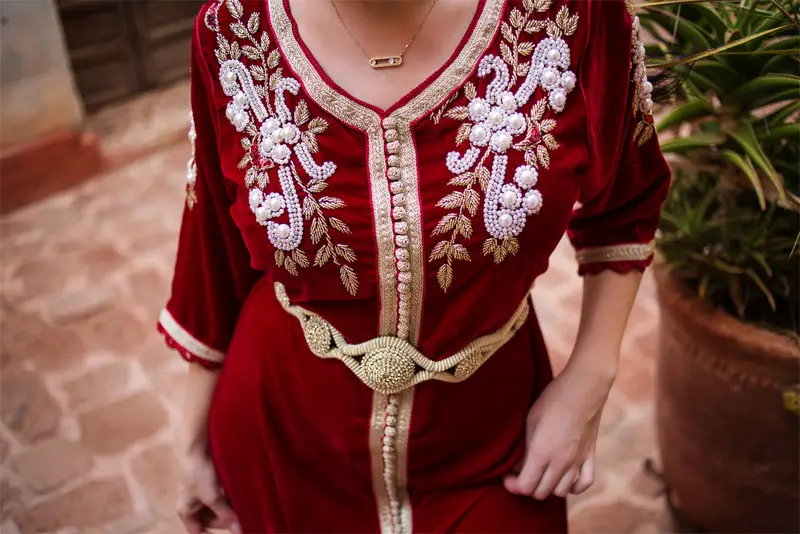
With an origin commonly attributed to Persia or Turkey, the kaftan is traditionally a long robe usually reaching ankle-length and worn over other clothing.
In many cultures, it’s considered a sign of royalty, although usage of the kaftan has extended to northeastern Africa, southeastern Europe, and (as a symbol of Islam) the Indian subcontinent and the Orient. In northern Asia, the term has been adopted to refer to a type of suit in Russian and some other Slavic languages.
9. Khalat
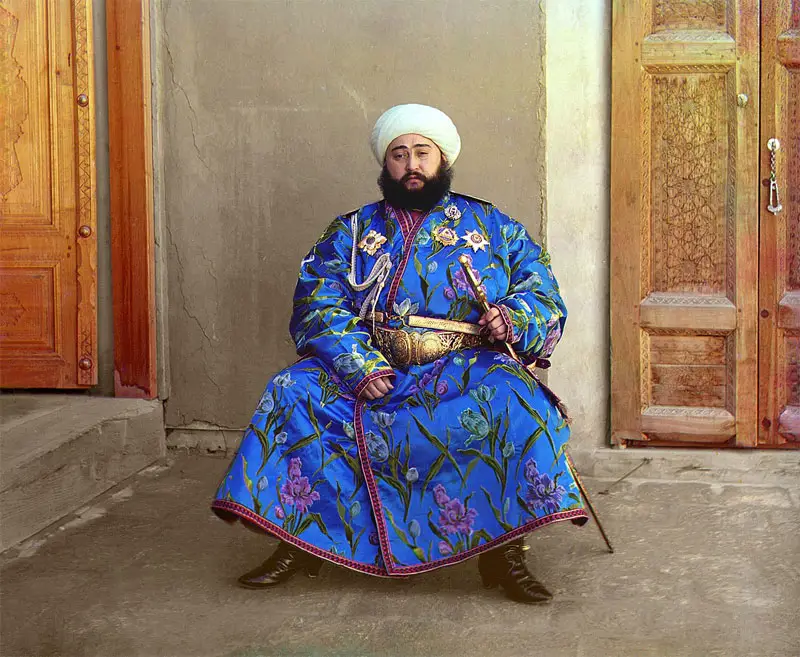
This type of robe is specifically a loose-fitting robe of cotton or silk that can be worn either functionally or ceremonially throughout most of southern Asia.
However, in northern Asia and Eastern Europe, the term is applied generically to refer to any type of robe.
10. Kimono
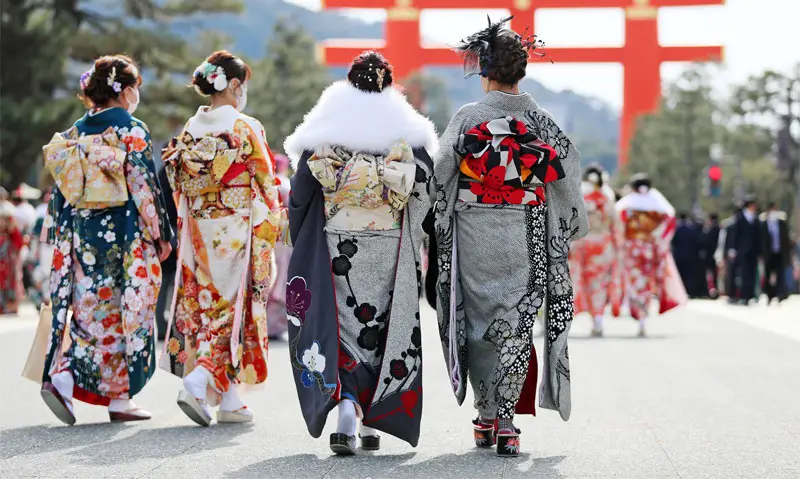
This one’s sometimes a matter of debate, since “kimono” is actually a generic term in Japan (着物 literally means “thing to wear”). The typical kimono is a T-shaped garment bound with a sash called an obi.
Traditional kimono were inspired by the Chinese hanfu and made of cotton and/or silk. Modern kimono are often made of polyester. These garments are warm and comfortable while still providing plenty of functionality.
However, while their Y-shaped collars and the fact that they’re tied at the waist often leaves them associated with the western robe, the real similarity is the fact that both names are derived from a generic term for garments. Instead, most of the association with robes actually comes from westerners confusing the kimono for a yukata.
11. Spa Robe (AKA Kimono-Style Robe)

Somewhere between a dressing down and bathrobe, this type of robes often said to be inspired by the Japanese yukata (mistakenly called a kimono by westerners) and aren’t as thick as a bathrobe and are often made of bamboo cloth or a polyester-cotton blend.
Some are hooded, but most have a flat collar. The belt may be integrated or a separate piece.
As the name implies, you’ll most often see this kind of robe used at spas where they provide comfort, something to wear to and from a hot tub or jacuzzi, and for heading to and from a massage, facial, or other luxury treatment.
12. Wizard Robe

Gaining its origin in the robes of the Celtic druids, wizard robes are often depicted in fantasy settings where they supposedly allow magic users to make complex hand gestures while providing magical protection.
And no, we don’t know how a robe affects your hands either.
13. Yukata
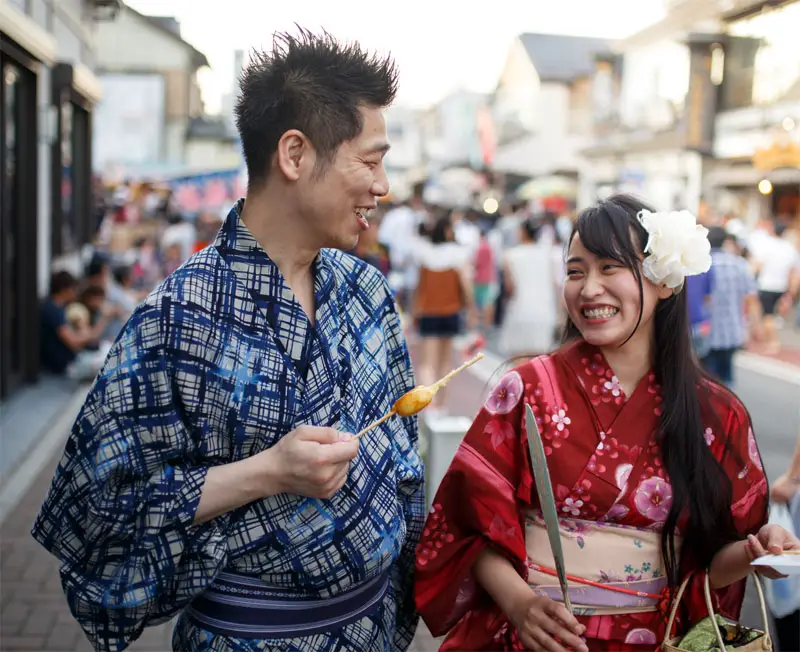
While the kimono is thick and warm, the yukata is generally considered a totally separate type of clothing, even though it can be considered a type of kimono in generic terms. Yukata are more robe-like than regular kimono and are worn mainly in the summer where their light and airy fabric helps keep you cooler.
Interestingly, while yukata are often worn during summer festivals, they get their origin at hot springs where they functioned in much the same way as a bathrobe. In fact, the name yukata (浴衣) actually translates to “bathing cloth”.
The yukata is often said to have inspired the modern spa robe, although westerners mistakenly use the word kimono instead of yukata during this comparison.

